

|
Jewish
cemeteries are documents of history. As such they often mirror the
culture of the time—they invite to linger and to observe. A Jewish
burial ground and its planning has always been one of the first
obligations for a Jewish community after
establishing themselves in a town or village. That cemetery was
hallowed ground, to be kept in perpetuity.
In Schneidemühl of the nineteenth century, the path from the living to the realm of the departed was unusually short, located no further than a fifteen-minute walk from the vicinity of the synagogue. It was fortuitous for the community that after the town's first great fire, more than 300 years ago, the crown had allotted the Jewish community land for a burial site, at that time the area was surrounded by empty fields and meadows, a fair distance from the nearest habitations. At the economic height of the Jewish community’s life, in 1854, Schneidemühl’s second Jewish cemetery was consecrated. The new grounds were an extension to the original burial ground that lay immediately adjacent. The earliest burial date recorded was that of Meyer b. David Baer who was laid to rest in field III. He had died on Thursday, 23 November 1854 (2 Kislev 5615) and, contrary to most other names, we know nothing else about him or his lineage. Today, these few extant photographs give us but a glimpse of this once beautiful cemetery. An example of an epitaph with elaborately rhymed text, embodying an acrostic, was that of Louis Kronheim, father of the community's popular house doctor Emil Kronheim.  . (Photo courtesy M. Cohen, USA) Hebrew inscriptions on grave stone of Louis Kronheim (centre) Below, the Erb-Begräbniss,
a family grave, of Salomon and Ernestine Simonstein, (great-grandparents
of
this
author) differed from a
traditional burial site. Salomon
Simonstein had died in 1904 at the age of fifty-six; his widow
Ernestine, née Lösser, was laid to rest there beside him a
quarter of a
century later in 1929. The slender but ornate wrought-iron enclosure,
laid out in the Art Nouveau style of the day with its love for natural
forms, defined the perimeter of these graves. Facing the
graveside were the traditional Hebrew inscriptions with the dates and
name of the deceased’s father.
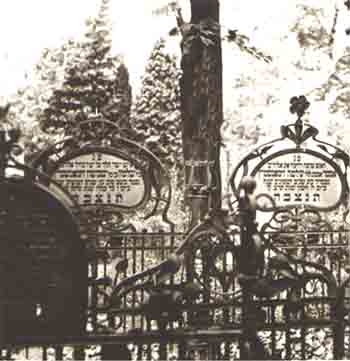 . (Photo courtesy M. Cohen, USA) Hebrew inscriptions on grave
markers
of
Salomon and Ernestine Simonstein, née Lösser 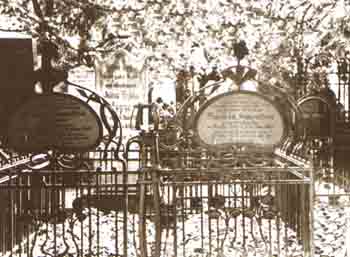 .
(Photo courtesy M. Cohen, USA) Facing the opposite direction, the reverse showed the German inscriptions on grave markers of Salomon and Ernestine Simonstein, née Lösser, — plainer and less detailed, alluding to liberal burial influences. 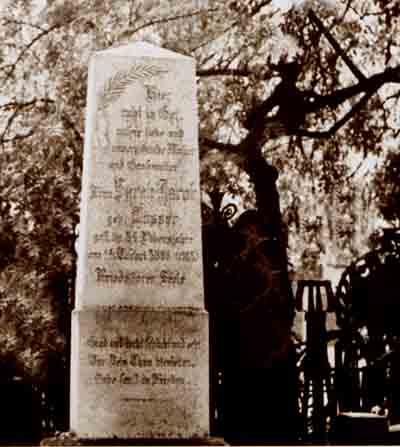 . (Photo courtesy M. Cohen, USA) German inscriptions on
gravestone of
Sarah Jacob,
née Lösser
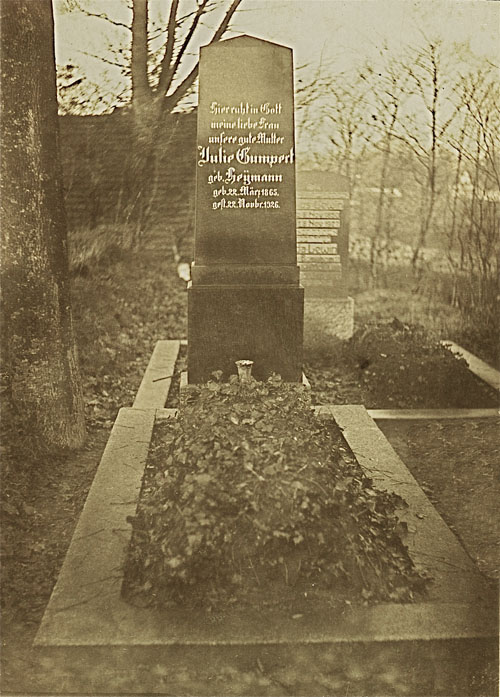 . (Photo courtesy Henny Nossig, née Simonstein, Brazil) German inscriptions on grave stone of Julie Gumpert, née Heymann 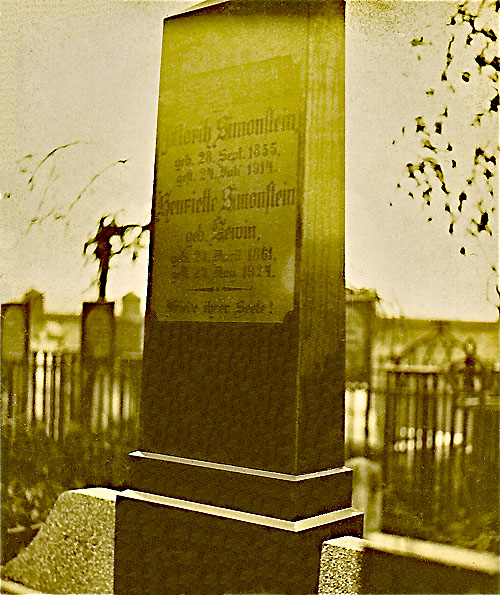 . (Photo courtesy Henny Nossig, née Simonstein, Brazil) German inscriptions on grave stone of Moritz Simonstein and his second wife Henriette, née Lewin 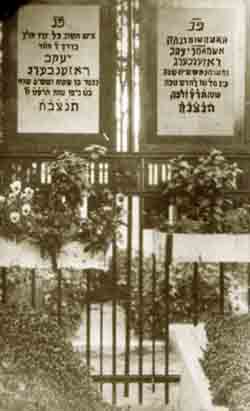 . (Photo courtesy J. Rosenberg, Chile) Graves of Jacob and Bertha Rosenberg, née Simonstein These photographs are but
some of the precious few remaining witnesses to the existence of the
once fine Jewish cemetery of
Schneidemühl.
Beholding
these photos seventy years later, one can sense the
sentimentality expressed by those who used to visit there
regularly—they knew the language of the gravestones, they knew that the
cemetery was the collective memory of the community.
The Nazis' razing of the cemetery in March 1939 points directly to the fierce anti-Semitic climate that had prevailed in Schneidemühl during the late 1930s. The graves of twelve generations of the Jewish community were obliterated, the gravestones plundered by the town's people and recycled as tombstones for non-Jewish cemeteries, others were used for profane purposes—a travesty reminiscent of events in the Middle Ages and the Crusades. 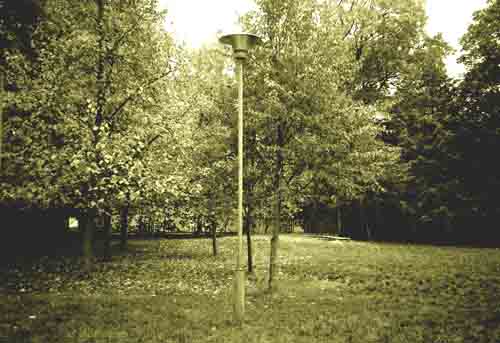 . (Photo P. S. Cullman, Canada) "Beware of well-kept lawns!" This is what remains today of the one-hundred-and-fifty-year old cemetery, property of the former Jewish community of Schneidemühl. No plaque exists here that would tell the casual visitor that twelve generations of Schneidemühl's Jews lie buried here. (Some of the above material has been excerpted from the recently published book History of the Jewish Community of Schneidemühl: 1641 to the Holocaust) |